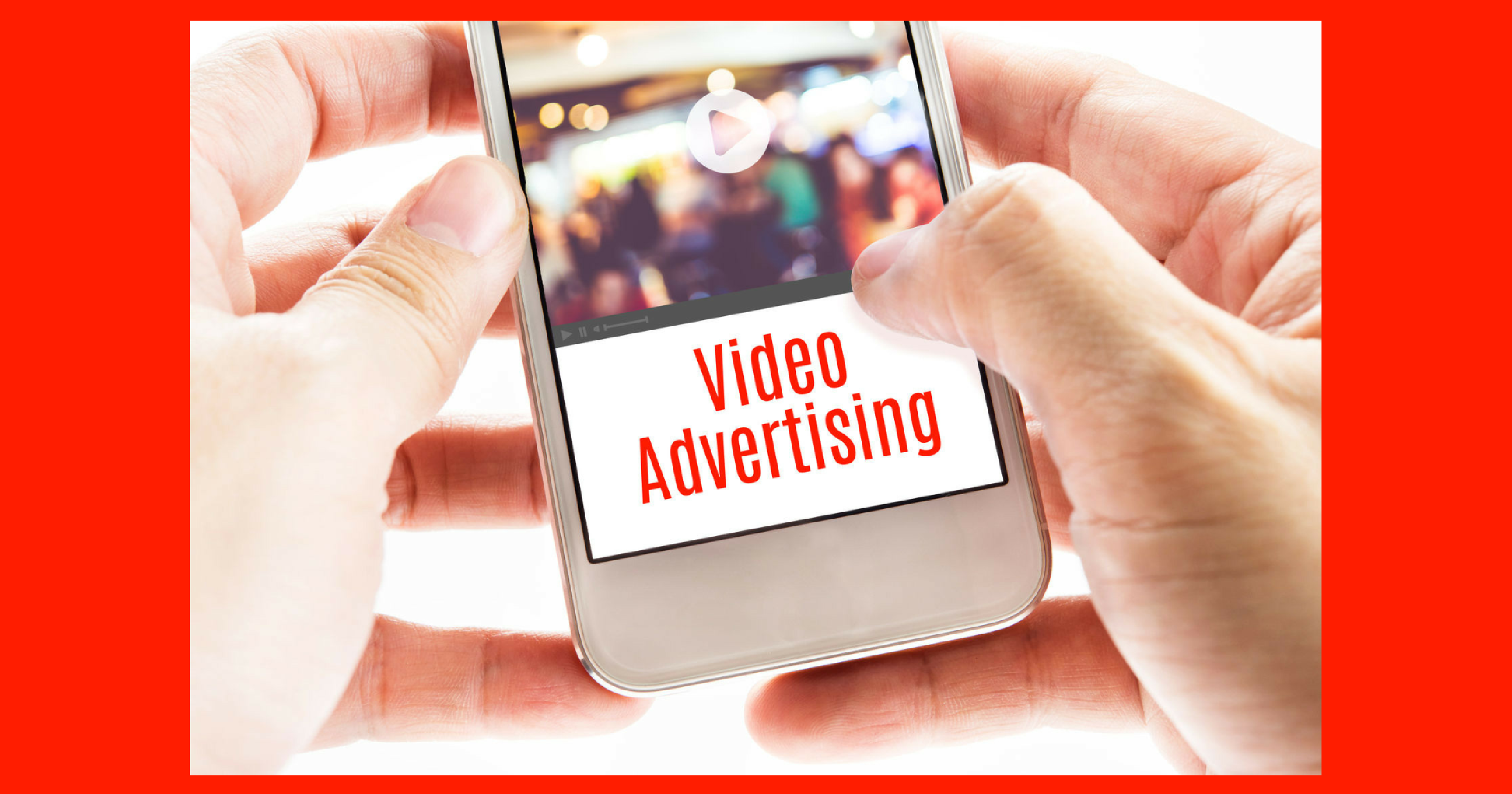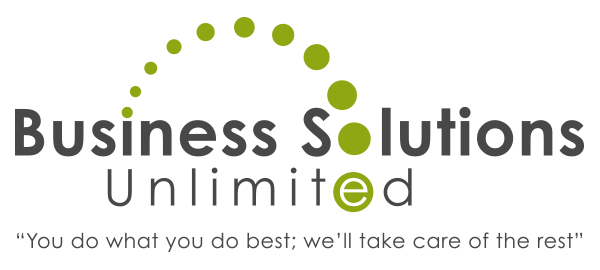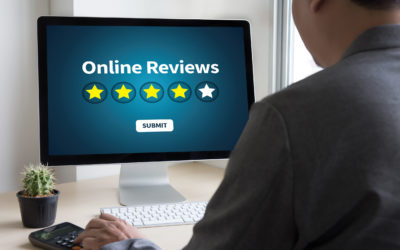
by admin
Not long ago, I had a conversation with a business owner who complained about how he couldn’t get around to marketing his business.
He’d paid for several marketing workshops, joined marketing mastermind groups and even subscribed to several marketing newsletters.
“I’ve got tons of marketing ideas, but no time to implement them,” he complained.
So, I suggested he outsource the marketing of his business. Let someone who had time and experience take his ideas and make them a reality.
He took my advice and outsourced his marketing to me.
Shortly thereafter, he had a website, a YouTube channel, a social media presence, templated emails, presentations, flyers and–most importantly–the marketing foundation to generate leads that can be funneled to his sales team.
Other than regularly scheduled meetings where he shared his ideas and business goals—his marketing happened while he could focus on working his business.
Benefits of Outsourcing Your Marketing
Besides saving time, a marketing virtual assistant can provide a business owner with valuable benefits:
Streamlining: Marketing is a multifaceted process that requires highly skilled and experienced personnel to carry out properly. Hiring such an individual could be well outside the budget of a small business. A virtual assistant isn’t an expensive addition to your staff.
Experienced Attention: When you outsource to a marketing expert, you get the full benefit of their knowledge, experience and time.
Increased Productivity: With your marketing being handled by someone else, you can focus on your core business and staff.
What Marketing Tasks Can You Outsource?
Pretty much any task related to attracting prospective customers can be outsourced. Some examples include:
Developing and Maintaining Your Website
An experienced marketing professional should create your site based on a content strategy that understands and speaks to your target market. Every page should include a call to action that ultimately funnels the audience to become a customer.
Additionally, maintaining a website is an important ongoing task. This can include developing new content, updating functionalities and security.
Building traffic to the site should also be a priority for your outsourced marketing.
Social Media
Social media has become very important in generating visitors to websites and in lead generation.
A marketing virtual assistant can be invaluable, developing content to post to engaging your social media community.
Additionally, social media advertising can be a great way to generate leads. Your marketing virtual assistant should understand how to create ads and target demographics in social media networks like Facebook.
Emails & Text Messaging
Creating copy for emails and text messaging can be challenging—especially when developing a campaign. An experienced marketer can help create a series of content targeting your prospective or existing customer that ultimately leads them to an eventual conversion.
Is a Marketing Virtual Assistant Right for Your Business?
We can help you with that decision. Give us a call at (904) 429-4588 and let’s see if a virtual assistant can help you save time and grow your business.

by admin
Digital Marketing Strategies Restaurants Can Use to Get Found Online
Not long ago, my wife and I took a leisurely Sunday drive along the Florida coast. Around noon, we got a bit hungry.
My wife asked her smartphone to “find restaurants near me.”
Instantly, we had a list of restaurants to choose for lunch.
“Here’s one with a fun name,” said my wife. “But I can’t find their hours or a menu.”
“Oooh. Here’s another one that got great reviews. It’s open until 2 PM. And this salad on their menu sounds yummy.”
Within two minutes, my wife proved out the success of a solid digital marketing experience. And that salad was pretty good.
Why You Should Make it Easy For My Wife to Find You Online
Because your customers are looking for you—online.
According to data from the National Restaurant Association, my wife and her smartphone has lots of company.
Consumers use their smartphones to look online to make decisions about where to eat.
Take a look at their data for hungry consumers who:
- Look up restaurant locations, directions and hours of operation: 83%
- Look at menus: 75%
- Read reviews: 55%
- Use rewards or special deals: 50%
- Order takeout or delivery from a restaurant’s website or app: 51%
How to Make it Easier for People to Find Your Restaurant Online
Now that we’ve seen how important digital marketing strategies are to your online success, let’s take a look at how you maximize your online presence.
Make “Near Me” Searches Work in Your Favor
Google is more than happy to present their searchers with relevant information about your restaurant. But that means you need to provide that information.
“Near Me” searches are local. Search engines want to present local information.
Make you provide accurate addresses, phone number and hours wherever your restaurant is listed:
- Google My Business
- Facebook
- Yelp
- OpenTable
- Tripadvisor
- Your Website
By the way, as a restaurant, you should be located on all of the above plus local business and social directories.
Of course, your own website is a must. Make it mobile friendly and easily navigable.
Put Your Menu Online
People are looking for your menu and search engines want to accommodate them. Take a look at how Google presents your restaurant information. There’s a spot for a link to your menu.
When you put your menu online, don’t make it a downloadable file. Nothing irritates an online searcher with a smartphone more than having to download a PDF and try reading through the document on their phone.
Instead, have your menu be part of your website (mobile friendly a must). Have it be readable. Include photos (sharable on social media).
Make Sure You’re Sociable
Getting found by searchers is important. Getting discovered online is better. People love discovering new restaurants, especially ones their friends are excited about.
- Make sure you’re creating content that’s easily sharable:
- Food and event photos
- Videos,
- Weekly specials (what’s on the menu!)
- Staff profiles, etc.
Ask your customers where they hang out online and start building a presence there. Social media platforms you might want to consider:
Become familiar with your social media channel’s feature. Learn which hashtags get the best engagement. Explore advertising options offered by the social media network. Since your customers are already there, this could be a good way to tap into their network of friends.
Leverage Review Sites
Search any restaurant by name, one of the first things you’ll see is a bunch of stars and people’s opinions about food, service and atmosphere.
Reviews carry weight when people are trying to decide where to eat.
Encourage your customers to leave reviews. Monitor reviews daily.
Thank positive reviewers for their kind words and feel free to share positive reviews on your social media channels and your website.
As for negative reviews, be proactive and professional. Respond to the issue and offer to resolve it. While the negative review usually stays online, how your respond online can carry positive weight.
We’re always available to help your business leverage their online presence. Give us a call at (904) 429-4588.

by Grant McManus
Earlier this year Google rolled out a new feature St. Augustine small businesses can use to promote timely news: Google Posts.
Google Posts isn’t exactly a new tool. It’s an evolution to a tool Google provided political candidates to post up-to-date information. The search engine thought so much about the benefits of the tool they polished it up and handed it over to businesses.
Google Posts allows you to publish content through your Google My Business account on topics such as events, products and services.
The content will appear in Google search and your Google Maps results. You can add images, text (up to 300 words) and event titles with start and end dates. Additionally, you can add call-to-action buttons.
Content goes live almost immediately. However, in an effort to promote the timeliness of the feature, Google will remove it from default view after seven days.
This could be a wonderful tool to use to make announcements about your small business.
This new feature also got us to thinking about other Google tools small businesses could use for their company.
Online Presence Tools
As a search engine, Google offers a number of tools you can use to enhance your website and online presence.
Google My Business: We mentioned Google My Business above and it should be the first Google feature for every small business.
Consider GMB the hub of your Google online search presence. It’s a business listing that provides searchers with your:
- Business Address
- Contact Phone Number
- Website Link
- Business Hours
- Business Photos
- Client Reviews
You can leverage your GMB content to make a simple Google Website plus enhance your Google Maps presence.
Google Mobile-Friendly Test: With a mobile online presence being a vital component for Google searches, they’ve provided a valuable tool that measures your website’s mobile friendliness. It’s easy to use and will give you a checklist of issues you might need to address.
Google Search Console: This tool allows you to monitor and maintain your website’s presence in Google’s search results. It provides a report about search queries, and what information from your site is easily available to searchers.
Google PageSpeed Insights: Not only is mobile friendliness important to Google, but so is the speed your website loads for its users. PageSpead Insights will score your website for both mobile and desktop uses plus offer a list of items you can use to make your site faster.
Research Tools
Google Trends: If you’ve ever wanted to gain insights into the search trends of your potential customers, check out Google Trends. This tool allows you to see trending topics in your industry, where searchers come from and a number other fascinating insights. Check out this trend result for “St. Augustine.”
Google Shopping Insights: Similar to Google Trends, Shopping Insights will give you a snapshot of current product popularity and trends. This could be an invaluable tool you can use to make product purchase decisions.
Google Forms: This tool allows you to create surveys to get feedback from your clients. You can also use the tool to send out invites to events.
Google Alerts: Get email notifications on any topic you’re interested in keeping up-to-date with. Set up an alert for your business name to see who is talking about you. Keep tabs on your competitors. Follow news about your industry.
Google is an everyday presence for pretty much everyone in the world. The suite of tools they provide business is robust and useful. Take a few moments this week to explore what they have to offer. Best of all, most of what they offer is free to use.
We’re always available to help your business leverage its online presence. Give us a call at (904) 429-4588.

by Grant McManus
Like many others in St. Augustine, I was wide awake at 2 AM on Monday, September 11, listening to the howling winds and torrential rain as Hurricane Irma made its way through our beautiful historic town. Anxiously, I watched as flood water from the nearby marsh crept my way.
Fortunately, the San Sebastian floodwater never reached the doorstep. The next morning, while I surveyed downed trees and power lines, I expressed thanks for the safety of my family. And I offered prayers to those who would struggle due to damaged homes and impacted lives from this catastrophic storm.
Since helping businesses market their products and services is my livelihood, I always have a keen interest in messages that reach my ear. Through the din of 24-hour weather news with images and stories of tragedy and destruction, some messages from businesses stood out.
- A food truck offered free bags of ice and food to those who lost power
- Veterinarians provided tips on helping pets through the storm and kept people updated on their office schedules
- Handymen and cleaning services were quick to offer help to those in needs (many times for free)
- Fusco Law Group provided updates on courthouse closings and schedules
- Augustine Independent Restaurant Association (SAiRA) provided updates on local restaurants opening after the storm—much-needed information for families seeking a breather from their home situation
The majority of this communication came from social media, specifically Facebook.
Businesses that seemed to project empathy along with wholehearted efforts to help the community rode a wave of social media sharing. People were hungry for businesses seeking to make a positive difference in the face of a catastrophic event and rewarded them with their patronage.
How to Market When Faced with a Natural Disaster
As a small business, marketing is essential for your livelihood even after a natural disaster like Hurricane Irma.
However, there are certain boundaries you should be aware of, that when crossed could have a detrimental effect on your business. Tensions and emotions run high during this period and if it appears you’re taking advantage of their situation for money, word will get out—fast in this social media environment (Rants and Rave posts are popular these days).
When promoting your products and services keep the following in mind:
Be Human & Empathic: Authenticity wins every time. People respond positively to someone who understands their situation. If you’re a St. Augustine local who owns a business here, then you personally understand their situation. Use your own feelings and emotions as a guide to how you’d like to be communicated with.
Understand Evolving Emotional States: Stress changes through the course of a natural disaster. From the initial storm to recovery, people can experience emotional states of fear, anxiety, overwhelm and anger. Make sure your tone, voice and message don’t add to those emotional states—instead, try to communicate assistance, relief and comfort.
Understand Needs: Decision making shifts abruptly after a storm like Irma. Maslow’s Hierarchy of Needs is a good guide to what your customers might be dealing with.
- Basic needs will always be paramount to their interests: Food, water, warmth, rest, security and shelter
- Followed by Psychological Needs: Relationships, accomplishments
- Then Self-Fulfillment Needs: Freedom to express and be creative—have fun
Stay in contact with your customer to understand where they are in the hierarchy. This is your guide to the buyer’s journey. Help fulfill what they need at the time they need it. Be their solution.
In the end, people just want their lives to get back to normal as quickly and painlessly as possible. See how your business can help people achieve that objective then put the word out and be responsive.
When Hurricane Mathew struck St. Augustine, we watched our business community rise above the catastrophe and spring back quickly. Much of that is due to the fact that St. Augustine is full of local businesses– a major advantage to the community. Every one of these local business owners and staff understood what each other was going through and we all pulled together.
We expect the same in the aftermath of Irma.
We’re always available to help your business communicate your message. Give us a call at (904) 429-4588.

by Grant McManus
Ahhh, the nights are getting longer, school buses are on the road again, and you can feel hints of the coolness of Autumn….
…oh, we’re in St. Augustine, Florida. Forget about the coolness of the changing season. We’re still a bit sweltering in these parts.
However, a trip to Michaels, Hobby Lobby, even Target shows all the promotional signs that Summer is ending and Fall is just around the corner…love watching the changing colors of the plastic leaves at the hobby stores.
For St. Augustine small businesses, now is the time to think about Fall promotions as well.
Let’s brainstorm some marketing ideas you can use to capitalize on the approaching season.
Prepare for the Holidays Big and Small
Fall is chock-full of holidays all leading up to the big shopping days after Thanksgiving (Black Friday or Small Business Day, hint hint). You can piggyback on public interest on these holidays in your:
- Social Media: Look to boost promotions to target markets receptive to making purchases during these holidays. Yes, Facebook has all the details you can leverage for this.
- Print Ads: Add some seasonal colors, language and offers to your ads
- And in-store promotions: Add card and poster reminders of upcoming holidays. Plus motivate your staff to put in the word about these holidays with your customers.
Grandparents Day: September 10
I know, not quite Fall—but still a good day to keep in mind.
Plus my wife and I just became first-time grandparents to a beautiful little girl (named Autumn—how appropriate). So this small but endearing holiday has hit my radar in a personal way.
This is a great day for grandchildren to give a gift to their grandparents. Or, take grandparents out to dinner.
First Day of Fall: September 22
Or, as we like to call it in our household, first day of pumpkin season.
Pumpkin spice appears magically every year to spruce up our drinks, food and potpourri. Play along with adding pumpkin themes to your promotion.
Invite customers over for a pumpkin & Fall celebration with flavored beverages and cookies. Promote the First Day of Fall sales and offers.
Give out Fall Season coupons (good through Black Friday or Small Business Day, hint hint).
Bosses Day: October 16
Wonderful opportunity to motivate people to take their boss out for lunch. Or, give a gift certificate to a restaurant, spa or favorite shop.
Halloween: October 31
Halloween is a time to let loose, get playful and scare up some creative promotions. Run a “Frightfully Great” or “Monstrously Fun” sale. Invite families over for Trick or Treat. Hand out small bags of candy with coupons inside (good through Black Friday or Small Business Day, hint hint).
Daylight Savings Time: November 5
We all gain an hour (or get it back depending on your opinion) on this day. Celebrate that extra hour with an hour-only sale or give-away.
Veteran’s Day: November 11
Be sure to thank veterans first and foremost. Also, be tactful, authentic and appreciative in your promotions. Give freebies and discounts to veterans and their families.
Thanksgiving Day: November 23
As a time for reflection and gratefulness, this is an opportunity to send out thank you cards and emails to your customers. You’ll also be ahead of schedule as most businesses do this in December. Also, it’s a good opportunity to provide an appreciation discount or coupon (good through Black Friday or Small Business Day, hint hint).
Black Friday: November 24
Small Business Day: November 25
Between Thanksgiving and the following Sunday, we Americans will spend an average $407. Most of the big corporate businesses are locked and loaded to grab a huge share (or all of it) of that cash.
By the way, did you get my hints up above? Start promoting your Black Friday and Small Business Day offers as often as you can leading up to that big day. Remind your customers to come back those days and bring friends to help support local businesses.
Here are some fun and simple offer ideas you can use during this time:
- Mystery Gifts: For $25 purchase, customer’s get a mystery gift (maybe a small item or a $5 gift card to your store or restaurant).
- Scavenger Hunt: Place a stuffed animal, pirate or another item somewhere in your store or restaurant. Have customers take a photo, share it on Facebook, show the cashier or waitress and get a discount or free appetizer. Maybe, place a hidden bowl of coupons somewhere in the store.
- Reward Loyalty: Open early for past customers only and offer amazing deals. Have an appetizer or menu item only loyal customers (those who are on your email list or received a coupon from earlier) know about.
Take advantage of the Fall season. It’s a time your customers are starting to spend money and you don’t want to miss out.
Give us a call at (904) 429-4588 if you’d like help brainstorming creative marketing ideas for the Fall.

by Grant McManus
In July, LinkedIn rolled out the ability to record and upload 10 minutes of video to a small number of members. Very soon, this feature will be available to all members of the social media network.
Given LinkedIn’s professional audience, this will be a great tool to share with other businesses and professionals your expertise and solutions you might have for their challenges.
One exciting aspect of this new feature will be the details of your viewers LinkedIn can provide:
- Where they work
- Their job title
- Top markets video was viewed
LinkedIn joins other social media networks in allowing video uploads. In fact, they’re one of the last to add this feature.
Since video’s been available on many other social media platforms:
Let’s Explore Video Best Practices for Each
We’ll ignore Youtube for now as the audience is pretty broad and…well…your video strategy would be dictated by your target market.
Facebook
Facebook loves videos these days. And they prefer uploaded videos over links to videos (say from Youtube).
Facebook users like to share emotionally engaging content. Basically, did the video make them laugh, cry or inspired. Facebook has a highly diverse and documented audience. Using their demographic tools, you can effectively create a video ad tailored to specific target markets.
Facebook allows videos up to 45 minutes long. However, you might want to keep lengths to no more than four minutes—with the important part of your message on the front portion.
Talking head formats seem to work pretty well on this platform, and apparently when you wear a Chewbacca mask as well.
Topics are anything you can build viewership with. You can showcase new products and services. Maybe announce a new staff member. If you’re a chef, do a live video of today’s specials.
Twitter
As with the 140 character limit, Twitter wants conciseness in videos—two minutes twenty seconds to be specific.
Informative and event videos seem to appeal to this audience. This would be a good platform to announce a new product or services. Or, news that would impact your target market.
Instagram
Talk about brevity, Instagram videos must be at least three seconds and no more than 60. Experts say less than 10 seconds is most effective.
Audiences on Instagram respond well to a variety of video topics: tutorials, emotional, breaking news, snippets of live events etc.
As with most of Instagram, image is important. Instead of being a talking head, show what you’re talking about. Show quick uses of a product, or an excited plating of your latest restaurant creation.
Pinterest
Pinterest provides the ability to upload videos and not too many businesses are doing so. Pinterest audiences like story and how to videos. Brightly colored and staged videos work well.
This could be a great platform to show how to use your product or how your product was used by a customer.
As with any best practices, your mileage may vary.
Also, as with any marketing strategy, it’s best to test, analyze and test again. Upload videos on each of the social media platforms and find out how people respond to your message.
Give us a call at (904) 429-4588 if you’d like help exploring video ideas and how to leverage social media networks for your business.









